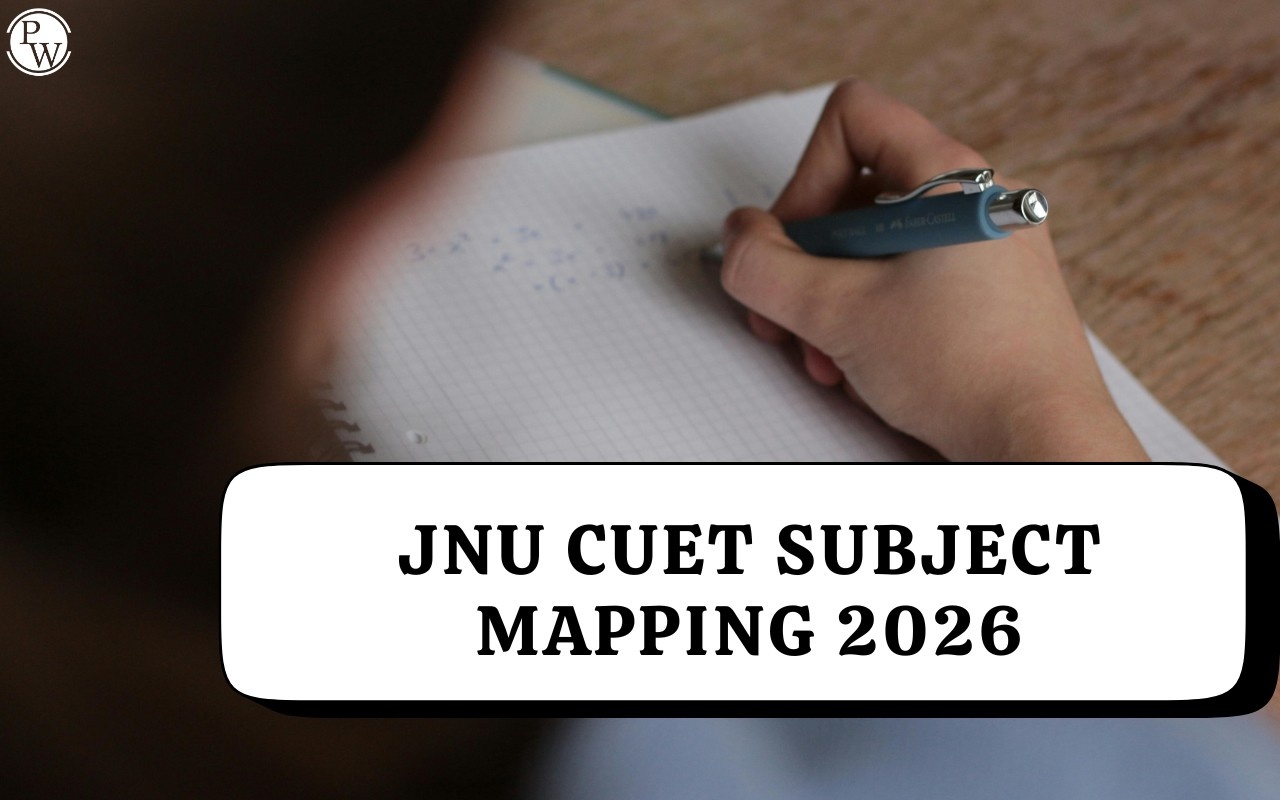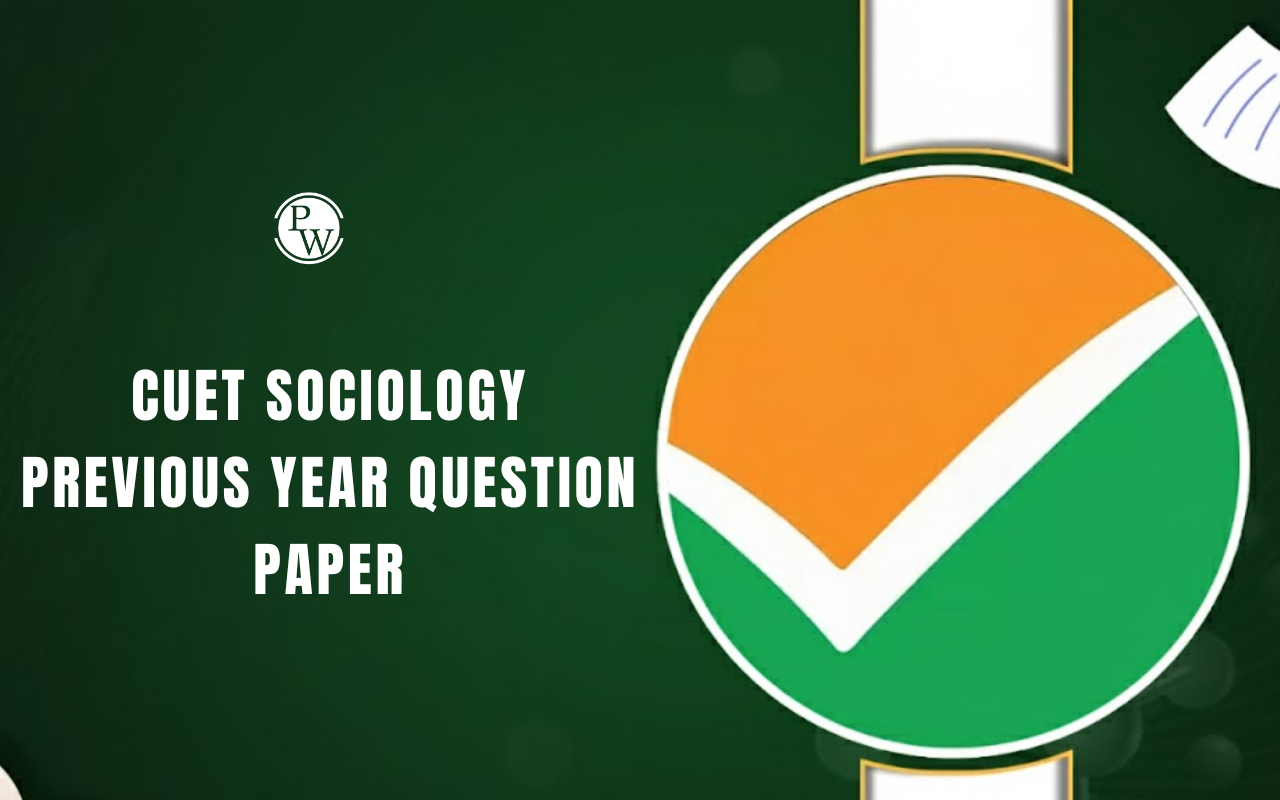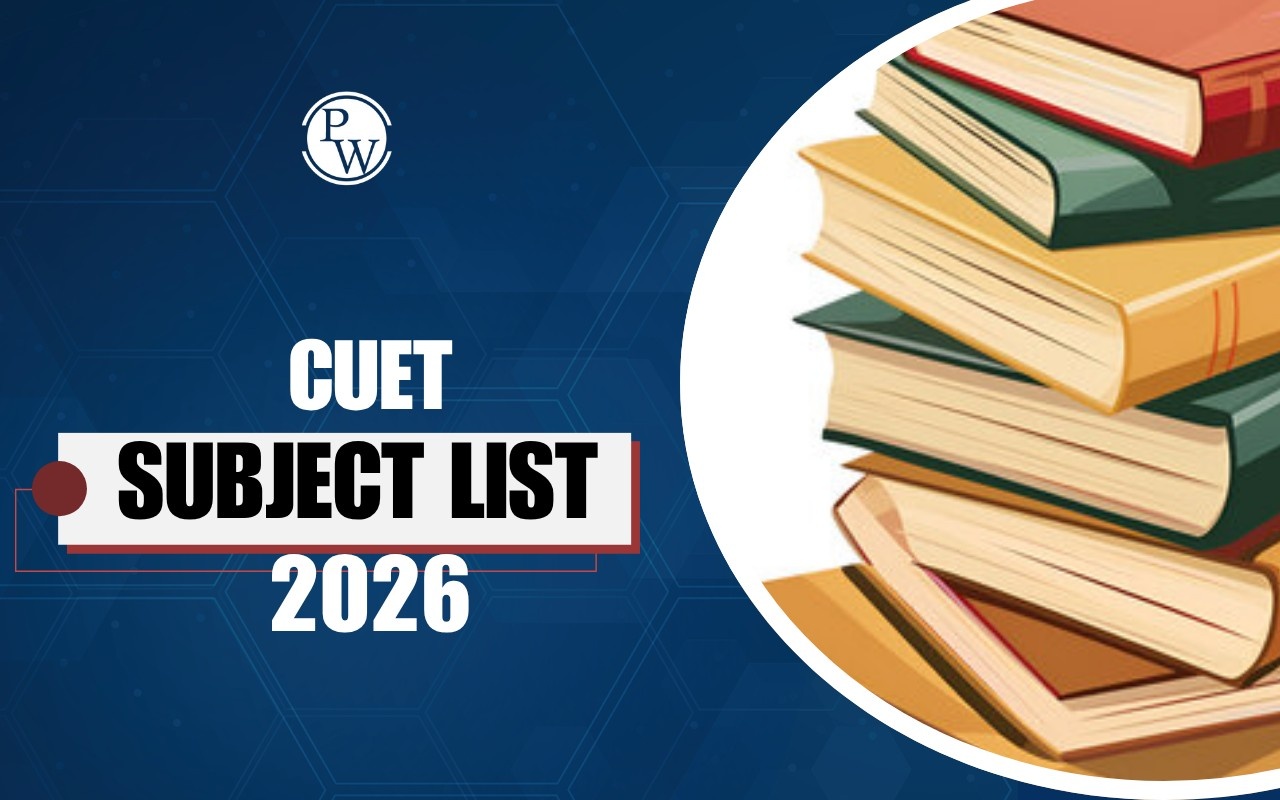
If you're planning to pursue B.Sc. (Hons.) in Computer Science, BCA, or opt for Computer Science as a domain subject at leading central universities such as Delhi University (DU), Jamia Millia Islamia (JMI), or Aligarh Muslim University (AMU), it is essential to thoroughly understand the CUET Computer Science Syllabus 2026.
Computer Science syllabus will soon be officially released by the National Testing Agency (NTA). However, aspirants are advised to start their preparation early based on the existing structure, which aligns closely with the NCERT Class 12 Computer Science curriculum. The syllabus covers core computing areas including Python programming, data structures, algorithms, file and exception handling, SQL and databases, and computer networks.
Section-Wise CUET Computer Science Syllabus
CUET Computer Science syllabus is divided into three main sections, depending on whether a student chooses Informatics Practices, Computer Science, or both as domain subjects. The syllabus is structured to test a candidate’s programming knowledge, logical reasoning, data handling, and network fundamentals, primarily aligned with NCERT Class 12 curriculum.
Also Check : CUET Syllabus
CUET Computer Science Syllabus 2026: Section A: Informatics Practices - 308
Exceptions and File Handling in Python
-
Exception Handling: syntax errors, exceptions, need for exception handling, user-defined exceptions, raising exceptions, handling exceptions, catching exceptions, Try-except-else clause, Try-finally clause, recovering and continuing with finally, built-in exception classes
-
File Handling: Text files and binary files, file types, opening and closing files, reading and writing text files, reading and writing binary files using the pickle module, and file access modes.
Database Theory
-
Database Concepts Introduction to database concepts, the difference between database and file system, relational data model: the concept of domain, tuple, relation, keys - candidate key, primary key, alternate key, foreign key;
-
Relational algebra: selection, projection, union, set difference and cartesian product
UNLOCK PYPs for CUET Computer Science Syllabus Prep
SQL stands for Structured Query Language
-
Advantages of using Structured Query Language, Data Definition Language, Data Query Language and Data Manipulation Language, Introduction to MySQL, Creating a database using MySQL, Data Types
-
Data Definition: CREATE TABLE, DROP TABLE, ALTER TABLE
-
Data Query: SELECT, FROM, WHERE
-
Data Manipulation: INSERT, UPDATE, DELETE
-
Math functions: POWER (), ROUND (), MOD ().
-
Text functions: UCASE ()/UPPER (), LCASE ()/LOWER (), MID ()/SUBSTRING ()/SUBSTR (), LENGTH (), LEFT (), RIGHT (), INSTR (), LTRIM (), RTRIM (), TRIM ().
-
Date Functions: NOW (), DATE (), MONTH (), MONTHNAME (), YEAR (), DAY (), DAYNAME ().
-
Aggregate Functions: MAX (), MIN (), AVG (), SUM (), COUNT (); using COUNT
-
(*). Querying and manipulating data using GROUP BY, HAVING, and ORDER BY.
-
Operations on Relations - Union, Intersection, Minus, Cartesian Product, JOIN
Computer Networks
-
Introduction to computer networks, Evolution of networking,
-
Network types: LAN, WAN, MAN
-
Network devices include a modem, an Ethernet Card, a Repeater, a Hub, a Switch, a Router, and a Gateway.
-
Network Topologies: Mesh, Ring, Bus, Star, and Tree topologies
-
The basic concept of MAC and IP Address
-
Difference between the Internet and the web
CUET Computer Science Syllabus 2026: Section B1: Computer Science
CUET Computer Science Syllabus Chapter 1: Exception and File Handling in Python
-
Exception Handling: Syntax errors, exceptions, the need for exception handling, user-defined exceptions, raising exceptions, handling exceptions, catching exceptions, the Try-except-else clause, the Try-finally clause, recovering and continuing with the finally block, and built-in exception classes.
-
File Handling: Text files and binary files, file types, opening and closing files, reading and writing text files, reading and writing binary files using the pickle module, and file access modes.
Also Check : CUET Exam Pattern
CUET Computer Science Syllabus Chapter 2: Stack
-
Stack (List Implementation): Introduction to stack (LIFO Operations), operations on stack (PUSH and POP) and its implementation in Python. Expressions in Prefix, Infix and Postfix notations, evaluating arithmetic expressions using a stack, conversion of Infix expression to Postfix expression
CUET Computer Science Syllabus Chapter 3: Queue
-
Queue (List Implementation): Introduction to Queue (FIFO), Operations on Queue (INSERT and DELETE) and its implementation in Python.
-
Introduction to DQueue and its implementation in Python.
CUET Computer Science Syllabus Chapter 4: Searching
-
Searching: Sequential search, Binary search, Analysis of Sequential and Binary Search. Dry run to identify best, worst and average cases. Implementation of searching techniques in Python.
CUET Computer Science Syllabus Chapter 5: Sorting
-
Overview of sorting techniques, Bubble Sort, Selection Sort and Insertion Sort. Dry run to identify best, worst and average cases. Implementation of sorting techniques in Python.
-
Hashing: Hash Functions, Collision Resolution, Implementing the Map Abstract Data Type.
CUET Computer Science Syllabus Chapter 6: Understanding Data
-
Data and its purpose, collection and organisation; understanding data using statistical methods: mean, median, standard deviation, variance; data interpretation; visualisation of data.
CUET Computer Science Syllabus Chapter 7: Database Concepts
-
Introduction to database concepts, the difference between database and file system, relational data model: the concept of domain, tuple, relation, keys - candidate key, primary key, alternate key, foreign key;
-
Relational algebra: selection, projection, union, set difference and cartesian product
CUET Computer Science Syllabus: Chapter 8, Structured Query Language
-
Advantages of using Structured Query Language, Data Definition Language, Data Query Language and Data Manipulation Language, Introduction to MySQL, Creating a database using MySQL, Data Types
-
Data Definition: CREATE TABLE, DROP TABLE, ALTER TABLE,
-
Data Query: SELECT, FROM, WHERE
-
Data Manipulation: INSERT, UPDATE, DELETE
-
Math functions: POWER (), ROUND (), MOD ().
-
Text functions: UCASE ()/UPPER (), LCASE ()/LOWER (), MID ()/SUBSTRING ()/SUBSTR (), LENGTH (), LEFT (), RIGHT (), INSTR (), LTRIM (), RTRIM (), TRIM ().
-
Date Functions: NOW (), DATE (), MONTH (), MONTHNAME (), YEAR (), DAY (), DAYNAME ().
-
Aggregate Functions: MAX (), MIN (), AVG (), SUM (), COUNT (); using COUNT (*). Querying and manipulating data using Group by, Having, Order by.
-
Operations on Relations - Union, Intersection, Minus, Cartesian Product, JOIN
CUET Computer Science Syllabus Chapter 9: Computer Networks
-
Introduction to computer networks, Evolution of networking,
-
Network types: LAN, WAN, MAN Network devices: Modem, Ethernet Card, Repeater, Hub, Switch, Router, Gateway.
-
Network Topologies: Mesh, Ring, Bus, Star, and Tree topologies
-
The basic concept of MAC and IP Address
-
Difference between the Internet and web
Attend FREE Demo Class for CUET Prep by SuperGrads
CUET Computer Science Syllabus 2026: Section B2, Informatics Practices
CUET Computer Science Syllabus Chapter 1: Database Query using SQL
-
Math functions: POWER (), ROUND (), MOD ().
-
Text functions: UCASE ()/UPPER (), LCASE ()/LOWER (), MID ()/SUBSTRING ()/SUBSTR (), LENGTH (), LEFT (), RIGHT (), INSTR (), LTRIM (), RTRIM (), TRIM ().
-
Date Functions: NOW (), DATE (), MONTH (), MONTHNAME (), YEAR (), DAY (), DAYNAME ().
-
Aggregate Functions: MAX (), MIN (), AVG (), SUM (), COUNT (); using COUNT (*).
-
Querying and manipulating data using Group by, Having, and Order by.
-
Operations on Relations - Union, Intersection, Minus, Cartesian Product, JOIN
CUET Computer Science Syllabus Chapter 2: Data Handling using Pandas – I
-
Introduction to Python libraries- Pandas, NumPy, Matplotlib. Data structures in Pandas - Series and DataFrames.
-
Series: Creation of Series from – an array, dictionary, scalar value; mathematical operations; Head and Tail functions; Selection, Indexing, and Slicing.
-
DataFrames: creation - from the dictionary of Series, list of dictionaries, Text/CSV files; display; iteration; Operations on Rows and columns: add, select, delete, rename; Head and Tail functions; Indexing using labels, Boolean Indexing; Styling & Formatting data, Head and Tail functions; Joining, Merging and Concatenations.
-
Importing/Exporting Data between CSV files and DataFrames.
CUET Computer Science Syllabus Chapter 3: Data Handling using Pandas – II
-
Descriptive Statistics: max, min, count, sum, mean, median, mode, quartile, Standard deviation, variance.
-
DataFrame operations: Aggregation, group by, sorting, deleting and renaming the Index, and Pivoting. Handling missing values – dropping and filling.
-
Importing/Exporting Data between MySQL database and Pandas.
CUET Computer Science Syllabus Chapter 4: Plotting Data using Matplotlib
-
Purpose of plotting: drawing and saving the following types of plots using Matplotlib – line plot, bar graph, histogram, pie chart, frequency polygon, box plot, and scatter plot.
-
Customising plots: colour, style (dashed, dotted), width; adding label, title, and legend in plots.
CUET Computer Science Syllabus Chapter 5: Introduction to Computer Networks
-
Introduction to Networks, Types of networks: LAN, MAN, WAN.
-
Network Devices: modem, hub, switch, repeater, router, gateway
-
Network Topologies: Star, Bus, Tree, Mesh.
-
Introduction to Internet, URL, WWW, and its applications- Web, email, Chat, VoIP.
-
Website: Introduction, the difference between a website and a webpage, static vs dynamic web page, web server, and hosting of a website.
-
Web Browsers: Introduction, commonly used browsers, browser settings, add-ons and plugins, cookies.
CUET Computer Science Syllabus Chapter 6: Societal Impacts
-
Digital footprint, Etiquettes for Net surfing and for communicating through social media, data protection, Intellectual Property Rights (IPR) and their violation, plagiarism licensing and copyrights, Free and Open Source Software (FOSS), Cybercrime and cyber laws, hacking, phishing, cyberbullying, Overview of Indian IT Act, preventing cybercrime.
-
E-waste is a hazard, and it requires management.
-
Awareness about health concerns related to the usage of technology, such as the effect on eyesight, physiological issues, and ergonomic aspects.
CUET Computer Science Syllabus Chapter 10: Data Communication
-
Concept of communication, Types of Data Communication, switching techniques
-
Communication Media: Wired Technologies – Twisted pair cable, Co-axial cable, Ethernet Cable, Optical Fibre;
-
Introduction to mobile telecommunication technologies
-
Wireless Technologies – Bluetooth, WLAN, Infrared, Microwave
-
Network Protocol: Need for Protocol, Categorisation and Examples of Protocol, HTTP, FTP, IP, PPP; electronic mail protocol
-
Concept of Channel, Bandwidth (Hz, KHz, MHz) and Data Transfer rate (bps, Kbps, Mbps, Gbps, Tbps)
CUET Computer Science Syllabus Chapter 11: Security Aspects
-
Threats and prevention: Viruses, Worms, Trojan horse, Spam, Cookies, Adware, Firewall, HTTP vs HTTPS
-
Network Security Concepts: Firewall, Cookies, Hackers and Crackers
-
Antivirus and its workings. Network security threats: Denial of service, Intrusion problems, Snooping, Eavesdropping.
CUET Computer Science Exam Pattern 2026
Common University Entrance Test (CUET) for Computer Science (Domain Subject) will be conducted as per the guidelines laid down by the National Testing Agency (NTA). Candidates aiming for undergraduate courses such as B.Sc. Computer Science, BCA, or related programs must be familiar with the exam structure to perform effectively.
|
CUET Computer Science Exam Pattern |
|
|
Parameter |
Details |
|
Exam Mode |
Computer-Based Test (CBT) |
|
Question Type |
Objective (Multiple Choice Questions) |
|
Total Questions |
50 (All Compulsory) |
|
Total Marks |
250 |
|
Duration |
60 minutes |
|
Marking Scheme |
+5 for each correct answer -1 for each wrong answer |
CUET Computer Science Marking Scheme 2026
CUET UG 2026 Computer Science exam will follow the marking structure prescribed by the National Testing Agency (NTA). Here is the detailed breakdown:
|
CUET Computer Science Marking Scheme 2026 |
|
|
Response Type |
Marks Awarded |
|
Correct Answer |
+5 Marks |
|
Incorrect Answer |
–1 Mark (Negative marking) |
|
Unanswered / Blank |
0 Marks |
CUET Computer Science Syllabus PDF Download
Students aiming to pursue undergraduate programs such as B.Sc. (Hons.) Computer Science, BCA, or B.Tech CSE through CUET 2026 and choosing Computer Science (Code: 308) as a domain subject can download the CUET Computer Science syllabus PDF from the link provided below. As of now, the official CUET Computer Science Syllabus 2026 has not been released by the National Testing Agency (NTA). The syllabus currently in use is based on the 2025 version, which is aligned with CBSE Class 12 Computer Science and Informatics Practices NCERT textbooks.
Download CUET Computer Science syllabus PDF
CUET Computer Science Preparation Tips 2026
1. Master NCERT & Class 12 Syllabus
-
Begin with NCERT and other board-prescribed textbooks.
-
Focus on topics like Databases, SQL, Python Programming, Computer Networks, and Data Structures.
2. Understand Key Concepts Thoroughly
-
Computer Science requires conceptual clarity.
-
Use flowcharts, dry runs, and pseudocode to solidify your understanding of algorithms, sorting, and searching techniques.
3. Create Concise Notes
-
Maintain separate notes for SQL commands, Python syntax, and data structure operations.
-
Include command formats, examples, and function outputs for quick revision.
4. Practice Topic-Wise MCQs
-
Regularly attempt multiple-choice questions from each unit.
-
Prioritize high-weightage areas like SQL queries, file handling, exception handling, stacks & queues.
5. Attempt Mock Tests & PYQs
-
Solve CUET previous year papers and take mock tests to simulate the real exam environment.
-
Analyze mistakes and revise weak areas consistently.
6. Manage Time Effectively
-
Allocate daily time slots to programming, theory, and SQL practice.
-
Use a revision tracker to monitor your weekly goals.
7. Focus on Important & Scoring Topics
-
Pay extra attention to:
-
SQL (Functions & Joins)
-
Python Data Structures (Lists, Stack, Queue)
-
Sorting & Searching Algorithms
Computer Networks and Data Communication
Physics Wallah provides CUET UG Online Coaching with live classes, study materials, and practice tests. The courses are designed to make learning simple and effective, helping you prepare for your CUET UG exams with ease.
|
CUET UG Exam Important Links |
|
CUET Computer Science syllabus 2026 FAQs
Is the CUET Computer Science syllabus based on NCERT?
How many questions are asked in the CUET Computer Science exam?
What are the key topics in the CUET syllabus for programming concepts?
What are the CUET syllabus topics for data structures?










